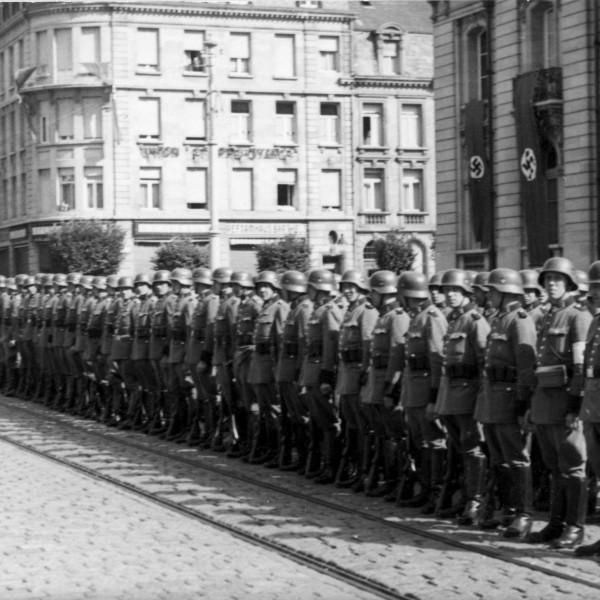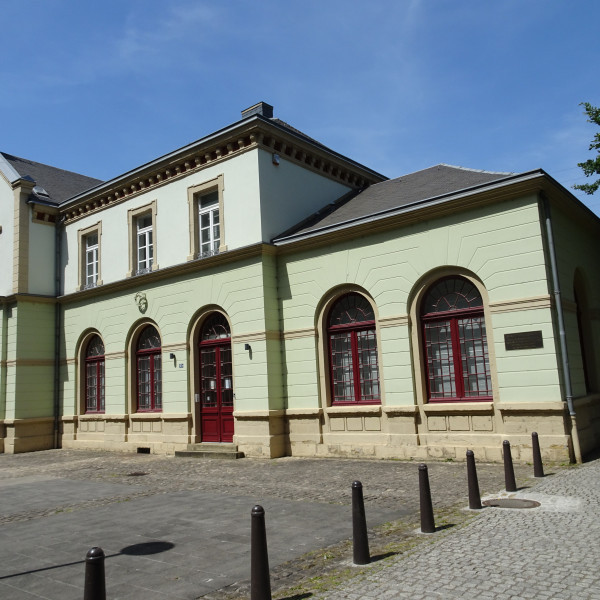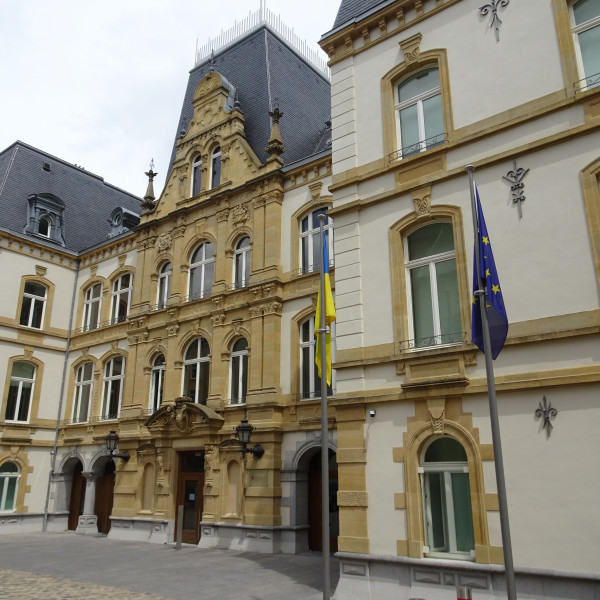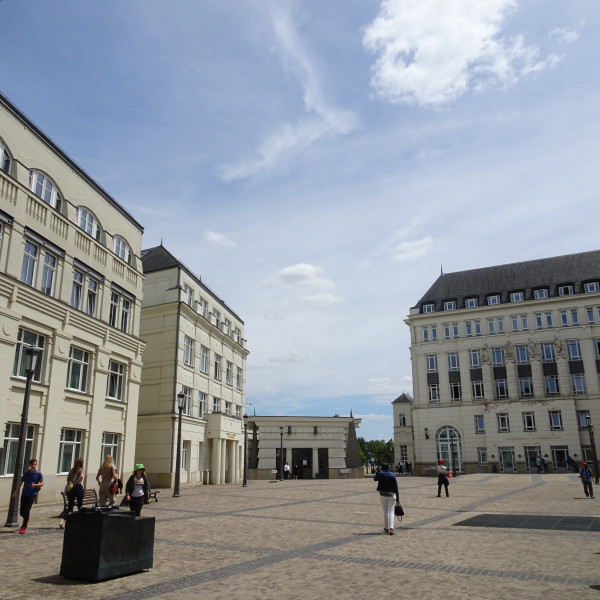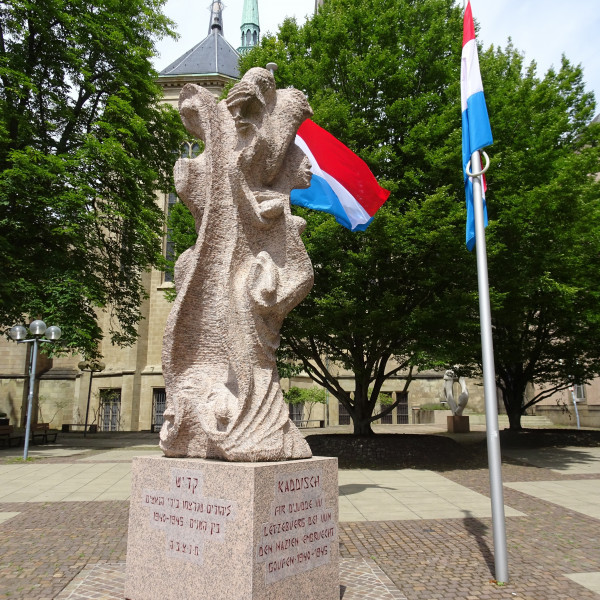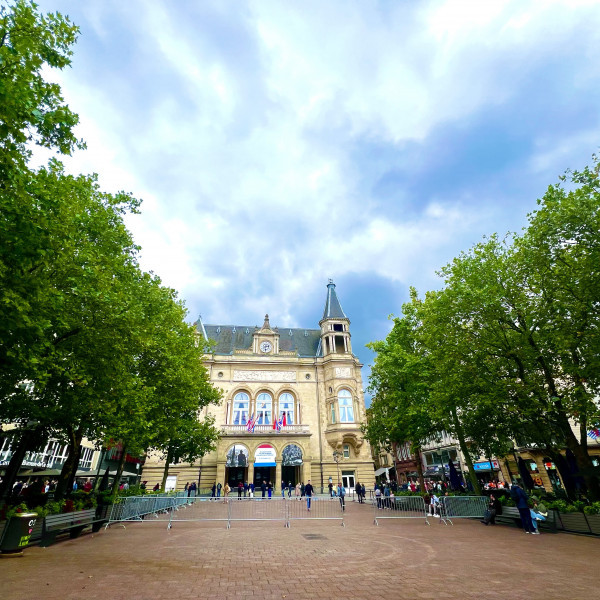
2. Former seat of the Nazi civil administration of Luxembourg (1940-1944)
After the invasion of German troops on 10 May 1940, Luxembourg was initially placed under German military administration, which was replaced by a German civil administration in July 1940. On 21 July 1940, Gustav Simon, NSDAP Gauleiter in the Gau Koblenz-Trier, was appointed Chief of the Civil Administration (CdZ) in Luxembourg. It was Simon's task to "lead” the Luxembourgers “back” into the German Volksgemeinschaft, the racially pure German national community. The idea was to completely “germanise Luxembourg” and to eradicate everything "foreign". The institutions of the sovereign state of Luxembourg were dissolved. As a convinced anti-Semite and National Socialist, Simon wanted to make Luxembourg "free of Jews" as quickly as possible.
Until the liberation of Luxembourg by the Allies on 10 September 1944, the seat of the civil administration was located in the north wing of the central administration building of the ARBED steel company. As early as 6 September 1940, Simon introduced the Nuremberg Race Laws in Luxembourg and ordered the first measures regarding Jewish assets ("Aryanisation"). In conformity with the Nuremberg Laws already in force in Germany since 1935, marriages between Jewish persons and nationals of "German or kindred blood" were strictly forbidden. New anti-Jewish measures continued to be added all the time.
Jewish persons were excluded from all public offices and all liberal professions. Companies had to dismiss Jewish employees without notice. On 4 September 1941, 97 Jewish persons were obliged to perform forced labour (Nennig quarry, Paul Wurth company, construction of the Eifel motorway). Jewish assets were frozen, Jewish stores and other businesses were confiscated. Of a total of 423 confiscated Jewish businesses, around 250 were located in Luxembourg City alone, many of them in what is now the Grand-Rue and Rue Philippe II.
As of 1 November 1940, Jewish children were forbidden to attend public school. From 1 August 1941 onwards, Jewish residents were forbidden to enter the street between the hours of 7 p.m. and 7 a.m. They were banned from restaurants, cinemas, theatres, public events, sports grounds and swimming pools; they must identify themselves in public by wearing a yellow armband on their left arm. This was followed in October 1941 by the bans of visiting non-Jewish hairdressers and riding the tram. In addition, Jewish persons were only allowed to do their shopping or have it done between 2 and 4 p.m.
In autumn 1941, another anti-Jewish decree was issued: From then on, Jewish persons may no longer be allowed to leave their residential community without a written permission by the police. With effect from 17 October 1941, Jewish residents over the age of six had to wear a sewn-on Jewish star in public. In addition to the formal decrees, the Jewish consistory, which was called "Council of Jewish Elders" as from 15 April 1942, was arbitrarily notified of ever new coercive measures. In spring 1941, the demolition of the synagogues in Luxembourg City and Esch-Alzette was ordered. In November 1941, by order of the Gestapo, the consistory announced that Jewish residents were forbidden to maintain friendly relations with non-Jewish residents or to converse with them on the street. Violations of these regulations could lead on both sides to incarcerations in a concentration camp. In addition, Jews had to adopt the additional first name "Sara" or "Israel". In the winter of 1941/42, Jewish persons had to hand in the following items: cameras, films, binoculars, typewriters, bicycles, gramophones, all electrical appliances, eating utensils made of real silver, all valuables, warm clothing such as fur articles, woollen scarves, woollen underwear, gloves, earmuffs as well as old textile articles and old clothes. This measure leads to many Jewish people no longer having enough warm clothing to protect themselves from the cold. From spring 1942, Jewish residents were not allowed to use public telephone booths, receive newspapers or own pets anymore. Jewish homes had to be visibly marked with a Jewish star.



